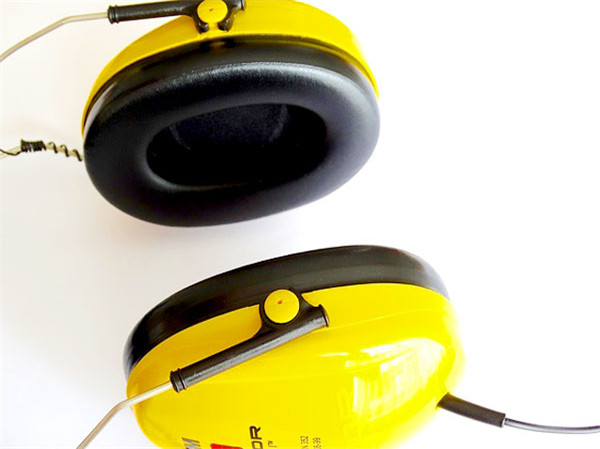现在大家在进行托福备考时官方真题Official托福模考软件相信是大家用的最多的工具了,对于托福成绩的提升是非常有帮助的。托福听力可以说是整个托福考试当中比较重要的一个部分,如何利用现有资料官方真题Official模考软件来提升大家的托福成绩呢?今天小编在这里整理了官方真题Official7托福听力Lecture2文本+题目+答案解析来分享给大家,希望对大家托福听力备考有帮助。

官方真题Official7托福听力Lecture2原文文本
Narrator: Listen to part of a lecture in a Biology class.
Pro: So, that is how elephants use infrasound. Now, let’s talk about the other end of the acousticalspectrum, sound that is too high for humans to hear — ultrasound. Ultrasound is used by many animals that detect and some of them send out very high frequency sounds. So, what’s a good example? Yes? Carol.
Carol: Well, bats, since they are all blind, bats have to use sound for, you know, to keep from flying into things.
Pro: That’s echolocation. Echolocation is pretty self-explanatory; using echoes reflected sound waves to locate things. As Carol said, bats use it for navigation and orientation. And what else? Mike.
Mike: Well, finding food is always important, and I guess not becoming food for other animals.
Pro: Right, on both counts. Avoiding other predators, and locating prey, typically insects that fly around at night. Now before I go on, let me just respond to something Carol was saying— this idea that bats are blind. Actually, there are some species of bats, the ones that don’t use echolocation that do rely on their vision for navigation, but it is true that for many bats, their vision is too weak to count on.
Ok, so quick summary of how echolocation works. The bat emits these ultrasonic pulses, very high pitch sound waves that we can’t hear. And then, they analyze the echoes, how the waves bounce back. Here, let me finish this diagram I started before class. So the bat sends out these pulses, very focused bursts of sound, and echoes bounce back. You know, I don’t think I need to draw on the echoes. Your reading assignment for the next class, it has a diagram that shows this very clearly.
So, anyway, as I were saying, by analyzing these echoes, the bat can determine, say, if there is wall in a cave that it needs to avoid, and how far away it is. Another thing it uses ultrasound to detect is the size and shape of objects. For example, one echo they quickly identify is the one they associatewith a moth, which is common prey for a bat, particularly a moth beating its wings.
However, moth happened to have a major advantage over most other insects. They can detectultrasound; this means that when a bat approaches, the moth can detect the bat’s presence. So, it has time to escape to safety, or else they can just remain motionless. Since, when they stop beating their wings, they’d be much harder for the bat to distinguish from, oh… a leaf or some other object.
Now, we have tended to underestimate just how sophisticated the abilities of animals that use ultrasound are. In fact, we kind of assumed that they were filtering a lot out, the way a sophisticatedradar system can ignore echoes from stationary objects on the ground. Radar does this to remove ground clutter, information about hills or buildings that it doesn’t need.
But bats, we thought they were filtering out this kind of information, because they simply couldn’t analyze it. But, it looks as if we were wrong. Recently there was this experiment with trees and a specific species of bats. A bat called: the lesser spear-nosed bat.
Now, a tree should be a huge acoustical challenge for a bat, right? I mean it’s got all kinds of surfaces with different shapes and angles. So, well, the echoes from a tree are going to a mass of chaotic acoustic reflections, right, not like the echo from a moth.
So, we thought for a long time that bats stop their evaluation at simply that is a tree. Yet, it turns out that bats or at least this particular species, cannot only tell that is a tree, but can also distinguish between, say, a pine tree, and a deciduous tree, like a maple or oak tree, just by their leaves. And when I say, leaves, I mean pine needles too. Any ideas on how it would know that?
Stu: Well, like with the moth, could it be their shape?
Pro: You are on the right track — It is actually the echo of all the leaves as whole that matters. Now, think, a pine tree with all those little densely packed needles. Those produce a large number of faint reflections in what’s... what’s called a ... a smooth echo.
The wave form is very even, but an oak which has fewer but bigger leaves with stronger reflections, produces a jagged wave form, or what we called: a rough echo. And these bats can distinguish between the two, and not just with trees, but with any echo that comes in a smooth or rough shape.
查看官方真题Official7托福听力Lecture2的题目请进入下一页→→→
相关推荐
-
小站新托福模考上线!抢先体验新版考试,内附免费内测名额!
2026-01-09![小站新托福模考上线!抢先体验新版考试,内附免费内测名额!]()
-
托福考试不小心按取消了怎么办
2025-03-20![托福考试不小心按取消了怎么办]()
-
托福到底能考多少分?19年必练真题告诉你答案
APP专享![托福到底能考多少分?19年必练真题告诉你答案]()
-
最多考几次托福能过
2024-12-24![最多考几次托福能过]()
-
有多少词汇量才可以参加托福
2024-12-03![有多少词汇量才可以参加托福]()
-
【官方真题Official托福阅读】官方真题Official3托福阅读词汇真题练习——pales&significance
2015-11-19![【官方真题Official托福阅读】官方真题Official3托福阅读词汇真题练习——pales&significance]()
-
【托福听力备考】官方真题Official听力高频词汇——文学讲座学科词汇汇总
2015-11-06![【托福听力备考】官方真题Official听力高频词汇——文学讲座学科词汇汇总]()
-
【官方真题Official托福阅读】官方真题Official3托福阅读词汇真题练习——integral&variable
2015-11-19![【官方真题Official托福阅读】官方真题Official3托福阅读词汇真题练习——integral&variable]()
-
【必备资料】官方真题Official5口语Task1真题文本及答案解析
2016-04-13![【必备资料】官方真题Official5口语Task1真题文本及答案解析]()
-
官方真题Official5托福阅读词汇真题练习——overwhelm&powerful
2015-12-09![官方真题Official5托福阅读词汇真题练习——overwhelm&powerful]()
-
【托福阅读备考】官方真题Official1托福阅读词汇真题练习——plugged&washed
2015-11-09![【托福阅读备考】官方真题Official1托福阅读词汇真题练习——plugged&washed]()
-
【考托写作资料】小站独家深度解析官方原题Official32——综合写作 Reading
2014-06-13![【考托写作资料】小站独家深度解析官方原题Official32——综合写作 Reading]()
-
【小站推荐】官方原题Official模考软件之考托模考测试题C1
2014-05-04![【小站推荐】官方原题Official模考软件之考托模考测试题C1]()
-
【写作资料】小站独家深度解析官方原题Official32——综合写作 Listening
2014-06-13![【写作资料】小站独家深度解析官方原题Official32——综合写作 Listening]()
-
官方真题Official5托福阅读词汇真题练习——afford&offer
2015-12-09![官方真题Official5托福阅读词汇真题练习——afford&offer]()
-
【托福阅读备考】官方真题Official1托福阅读词汇真题练习汇总
2015-11-09![【托福阅读备考】官方真题Official1托福阅读词汇真题练习汇总]()
-
【托福阅读备考】官方真题Official1托福阅读词汇真题练习——championed&attributes
2015-11-09![【托福阅读备考】官方真题Official1托福阅读词汇真题练习——championed&attributes]()
-
官方真题Official8托福阅读词汇真题练习——merge&expand
2015-12-18![官方真题Official8托福阅读词汇真题练习——merge&expand]()
-
【官方真题Official托福阅读】官方真题Official3托福阅读词汇真题练习——arduous&difficult
2015-11-19![【官方真题Official托福阅读】官方真题Official3托福阅读词汇真题练习——arduous&difficult]()
-
【托福听力提分】有效使用托福听力官方真题Official的4个阶段详解
2015-10-28![【托福听力提分】有效使用托福听力官方真题Official的4个阶段详解]()
-
【考托写作资料】小站独家深度解析官方原题Official32——综合写作例文1
2014-06-13![【考托写作资料】小站独家深度解析官方原题Official32——综合写作例文1]()
定制专属课程规划
领取成功
添加助教,定制你的专属课程规划

每日提分任务
专业提分资料
全程督学答疑























